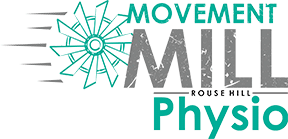Understanding Non-Specific Chronic Low Back Pain: Causes, Symptoms, and Treatment
Non-specific chronic low back pain is a common condition that affects a significant portion of the population. While it lacks a specific identifiable cause, it is a term used to describe persistent or recurring low back pain that lasts for more than three months. In this blog, we will delve into the nature of non-specific chronic low back pain, exploring its potential causes, typical symptoms, and available treatment options.
Understanding Non-Specific Chronic Low Back Pain:
Non-specific chronic low back pain refers to pain and discomfort in the lumbar region that does not arise from a specific underlying condition or structural abnormality. Unlike specific back pain caused by fractures, infections, or herniated discs, non-specific chronic low back pain does not have a clear identifiable cause through diagnostic imaging or tests. It is often considered a multifactorial condition influenced by various physical, psychological, and lifestyle factors.
Causes and Contributing Factors:
Prolonged Postures: Prolonged sitting, slouching, or adopting prolonged postures during daily activities can strain the muscles, ligaments, and discs in the lumbar region. Over time, this can contribute to chronic low back pain. Whether you are always in a “good”or “bad”posture.
Sedentary Lifestyle: Lack of regular physical activity and a sedentary lifestyle can weaken the supporting muscles and lead to deconditioning, making the back more susceptible to pain and injury.
Psychological Factors: Emotional stress, anxiety, and depression can influence the perception and experience of chronic pain. Psychological factors can exacerbate pain intensity and hinder recovery.
Symptoms of Non-Specific Chronic Low Back Pain:
The symptoms of non-specific chronic low back pain can vary among individuals. Common characteristics include:
Persistent or Recurring Pain: Pain in the lower back that lasts for more than three months, often described as a dull, aching sensation. The pain may vary in intensity and may be accompanied by episodes of flare-ups.
Stiffness and Reduced Range of Motion: Individuals may experience stiffness and difficulty moving the lower back, leading to reduced flexibility and limited range of motion affecting activities of daily living (ADLs).
Muscle Tension and Spasms: Chronic low back pain can cause muscle tightness and spasms, resulting in further discomfort and restricted mobility.
Pain with Activities: Pain may worsen during certain activities such as bending, extending, lifting, or prolonged sitting. The pain may subside with rest or changes in position.
Treatment Approaches for Non-Specific Chronic Low Back Pain:
Physiotherapy & Exercise Physiology: Physiotherapy & exercise physiology play a crucial role in the management of non-specific chronic low back pain. Physiotherapists & EPs assess individual factors contributing to pain and develop personalised treatment plans. These may include manual therapy techniques (physiotherapy), exercises to improve muscle strength and flexibility, and education on movement.
Exercise and Activity Modification: Regular exercise, such as aerobic and strength activities, can alleviate pain and improve function. Modification of daily activities and ergonomics can also reduce strain on the lower back.
Pain Management Techniques: Modalities like heat or cold therapy, transcutaneous electrical nerve stimulation (TENS), and manual therapy may provide temporary pain relief.
Psychological Support: Addressing psychological factors through counselling, cognitive-behavioural therapy, and stress management techniques can be beneficial in managing non-specific low back pain. Psychological support can help individuals develop coping strategies, reduce stress levels, and improve overall well-being.
Lifestyle Modifications: Adopting a healthy lifestyle can contribute to managing chronic low back pain. Maintaining a healthy weight through proper nutrition and regular exercise reduces strain on the spine. Additionally, incorporating relaxation techniques, such as yoga or meditation, can help promote relaxation.
Pharmacological Intervention: In some cases, non-steroidal anti-inflammatory drugs (NSAIDs), muscle relaxants, or analgesics may be prescribed to manage pain and inflammation. However, it’s important to note that medication should be used in conjunction with other treatment strategies and under the guidance of a healthcare professional.
Education and Self-Management: Educating individuals about their condition, and techniques for self-management can empower them to take an active role in their recovery. Learning strategies for pain management, activity modification, and preventive measures can significantly improve long-term outcomes.
Quick Overview:
Non-specific chronic low back pain is a complex condition characterised by persistent or recurring pain in the lumbar region without a specific identifiable cause. Understanding the potential contributing factors, such as strength, proonged posture, sedentary lifestyle, and psychological factors, is crucial in developing effective treatment strategies. Physical therapy, exercise, pain management techniques, psychological support, and lifestyle modifications play integral roles in managing non-specific chronic low back pain.
By addressing the underlying factors, improving muscle strength and flexibility, and promoting overall well-being, individuals with non-specific chronic low back pain can experience reduced pain, improved functionality, and a better quality of life. It is important to consult with a healthcare professional, such as a physiotherapist or exercise physiologist, to receive a personalised treatment plan tailored to individual needs and GOALs. With a comprehensive and multidisciplinary approach, individuals can find relief and regain control over their lives, enabling them to live the life they want without the constraints of chronic low back pain.
Book in now with one of our physiotherapist’s or exercise physiologist’s to regain control and to live the life you want!
